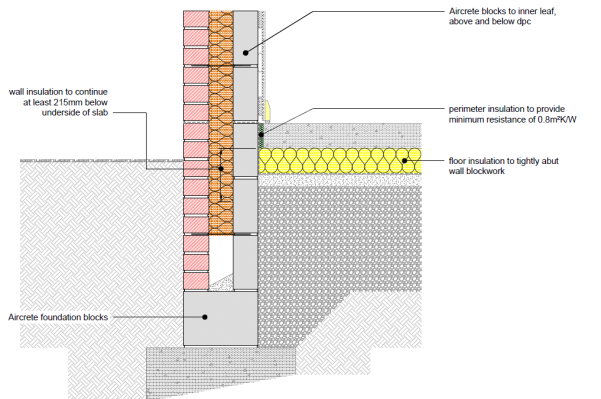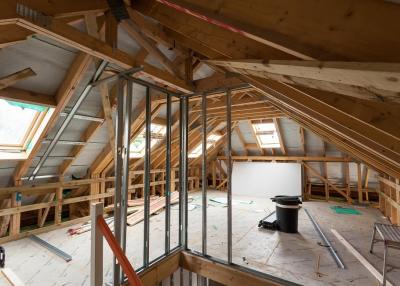How to get it right: Perimeter insulation
 Perimeter upstand insulation performs a vital function in the thermal envelope of the building. It’s used to prevent cold bridging at the edge of the floor where it meets the wall. Basically, it stops the heat from seeping out of the edges of the floor where the screed/concrete meets the wall.
Perimeter upstand insulation performs a vital function in the thermal envelope of the building. It’s used to prevent cold bridging at the edge of the floor where it meets the wall. Basically, it stops the heat from seeping out of the edges of the floor where the screed/concrete meets the wall.
A cold bridge or a thermal bridge is a weak spot in the insulation where heat can be lost and can account for as much as 34% of the thermal loss from cold bridging. In fact SAP software used to calculate the thermal efficiency of a building has a 15% default value built into the calculation process to account for heat loss at junctions.
So by using upstands this cold bridge can be reduced or even eliminated, increasing the thermal performance of the floor insulation and reducing energy costs.
Ensure that the perimeter insulation isolating the screed has a minimum thermal resistance of 0.8Wm2K/W and is at least 25mm thick to prevent cold bridging.
The upstand should also overlap the wall insulation, with a minimum of 150mm from the bottom of the wall insulation to top of the insulation upstand.
The upstand should be tightly fitted against the wall and floor insulation so that there are no gaps. Good practice would be to place your floor insulation boards around the external perimeter first.
That way you'll use full sheets with a straight edge against the external wall and then offcuts can be used to make up the fit against internal walls or the centre of the floor.
Find out more Construction Details
Read more about other building insulation work
- How to get it right: Roof insulation
- Tackling insulation challenges
- Warm, dry, full fill cavity insulation
- How to avoid floor insulation gaps
- Solid wall insulation solution
Sign up to the building bulletin newsletter
Over 48,000 construction professionals have already signed up for the LABC Building Bulletin.
Join them and receive useful tips, practical technical information and industry news by email once every 6 weeks.
Subscribe to the Building Bulletin




Comments
How to get it right: Perimeter insulation
Submitted 1 year 3 months ago
Thanks for the information on the above, very useful to show contractors when they are arguing about doing this and to show this is still required even when the cavity wall insulation is min 215mm below floor structure.
Although I do feel that it is best to put the perimeter insulation around first then lay the floor insulation boards because:
1 - You can push the perimeter insulation tight against the wall with the floor insulation
2 - You don't need to worry about offcuts as you wouldn't normally put 25mm insulation on the floor
3 - You don't have to try to attach the perimeter insulation to the wall as it is held in by the floor insulation.
4 - The floor insulation boards should be laid with staggered joints so you have to cut every other one any way.
Thanks
Add new comment